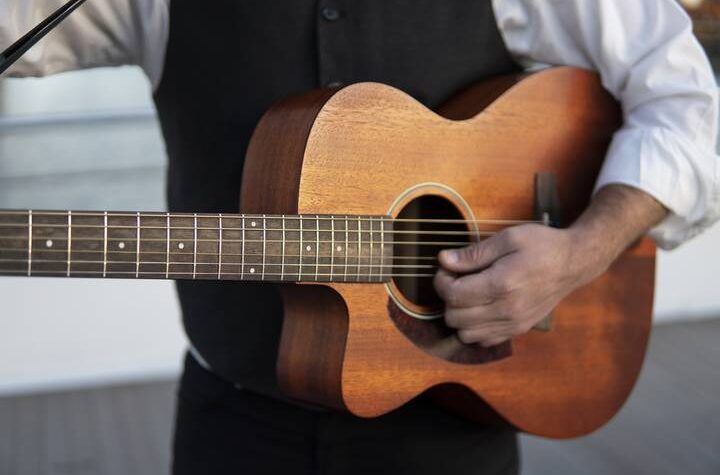Playing guitar is a creative pastime and usually attracts those with artistic flair and musical prowess. It is an instrument that can be played solo, so you are typically front in the centre during performances, and your axe is on display in all its glory.
Have you seen the paint styles and designs on a guitar? They make the instrument stand out, but they are not only there for looks; they also protect the guitar. If you want to bling out, and keep your guitar in great shape, look no further. Here are the best types of guitar finishes you can get.
Type #1: Polyurethane Guitar Finishes

This is a method of spraying a few coats of poly on the guitar for a resilient finish. Fender started this in the 60s as an alternative to lacquer, and it was a fast application.
It also buffs up to a nice gloss finish and doesn’t discolour, working well for gigging because it stands up good to abuse and resists some scratching and wear, along with spills on the surface.
Type #2: Nitro Guitar Finishes
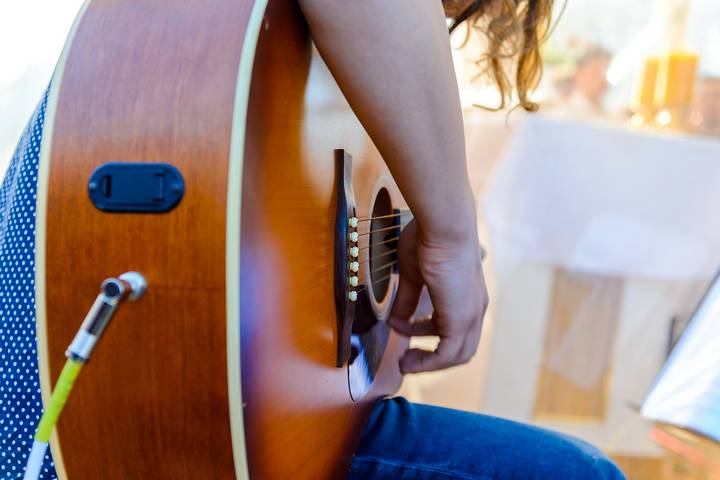
Nitrocellulose lacquer, or Nitro, comes from plant-based cellulose mixed with a nitro solvent. This leaves a great finish that “wears’ in all the right places, giving you a worn look to your guitar.
While it does get distressed over time, it is easy to patch, so you can bring it back to the original application. It also retains the guitar’s wood resonation with its softer, thinner finish. Nitro is typically used on higher-end guitars; people say it lets their guitar breathe and yield a more open sound.
Nitrocellulose lacquer was first used in the car industry and then transitioned into instruments because of its look and ease of application. Ultimately, this evaporative finish is still in demand and looks even more amazing as it wears.
Type #3: Polyester Guitar Finishes
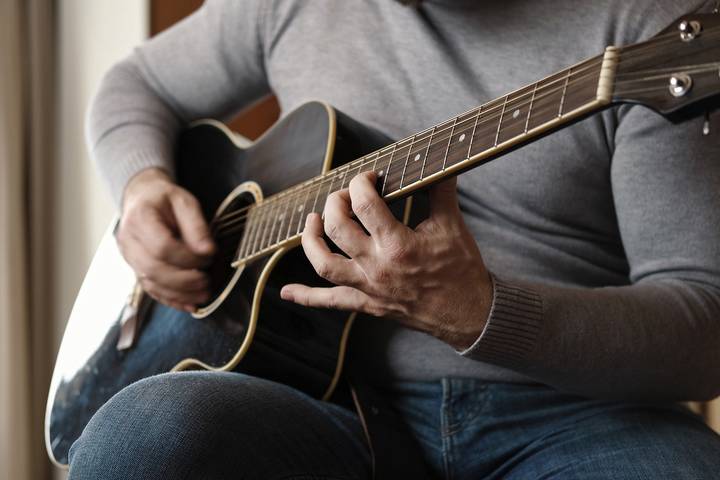
Polyester finishing is a cheaper alternative to Polyurethane and was introduced in the 70s. It is thick and dries quickly, often used in large manufacturing processes.
Polyester is more of a budget type of finish for lower-end guitars from large manufacturing companies, and they can pump these out pretty quickly. It works well on wood instruments too. There was talk of it affecting the guitar’s sound, but realistically, the cheaper brands that used this coating had more to do with it.
Type #4: Oil Guitar Finishes

With oil, it is a finish that soaks into the wood and helps protect it but requires more maintenance. Some naked wood guitars are beautiful, and you don’t want to cover them with a coating, so oil is a natural choice. You can use:
- Lemon oil
- Linseed oil
- Tung oil
Some oils work better with different woods but do not use vegetable oils.
Type #5: Shellac Guitar Finishes

Shellac comes from the female Lac bug, native to Thailand and India and is a natural resin used on guitars. It enhances the natural wood grain patterns and leaves a glossy, lightweight coating. Shellac is easy to apply but requires about a week to fully dry, so ensure you have an extra instrument on hand to keep your fingers busy.
Type #6: Blonde Guitar Finishes
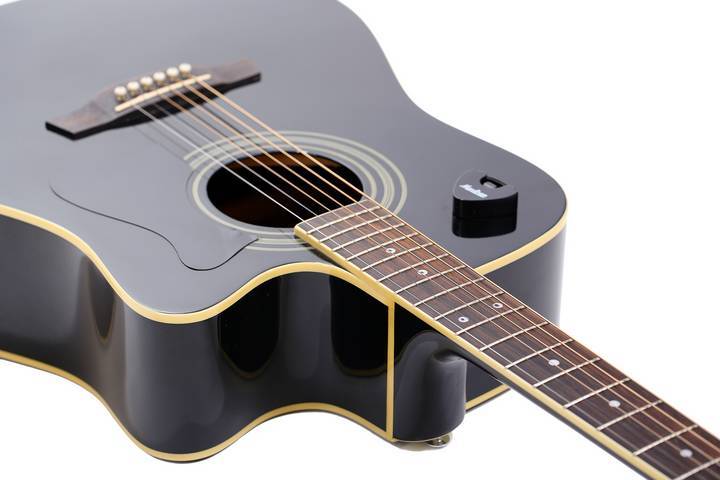
This is a classic finish from the 50s that was first used as furniture and automotive lacquer. As it ages, it yellows to a butterscotch tone. This colour represented the post-war era with a brighter look on life, and as TV dominated the culture, it glowed on the screen.
Type #7: Sunburst Guitar Finishes
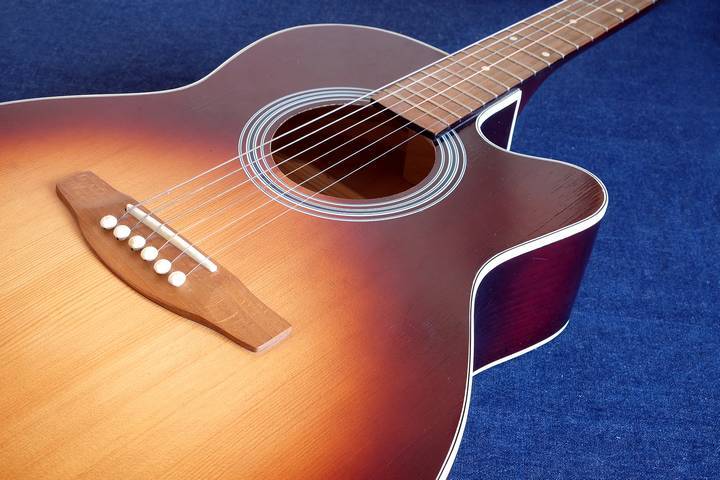
The sunburst finish takes you back to the days of jazz and classic rock Les Paul guitars. It starts with the stain as a base layer, with darker red and brown tones working toward the edges.
Type #8: Cobra Burst Guitar Finishes
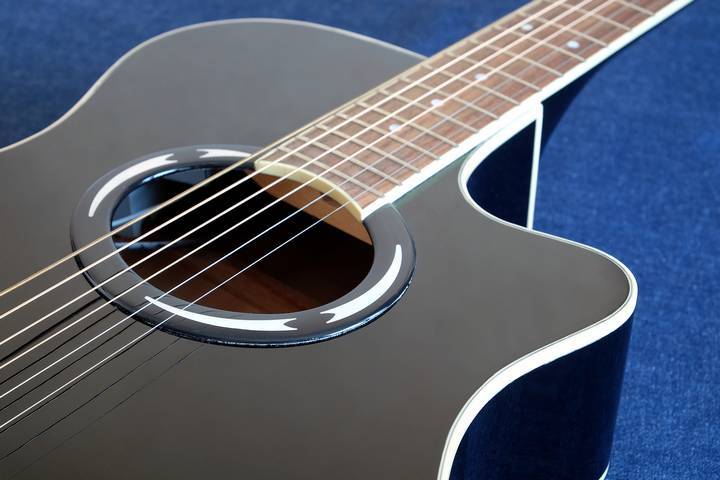
This is an Ernie Ball classic with deep, bright streaks on a mahogany body with a maple top. It then finishes up, edged in deep black.
Type #9: Paisley Pink Guitar Finishes
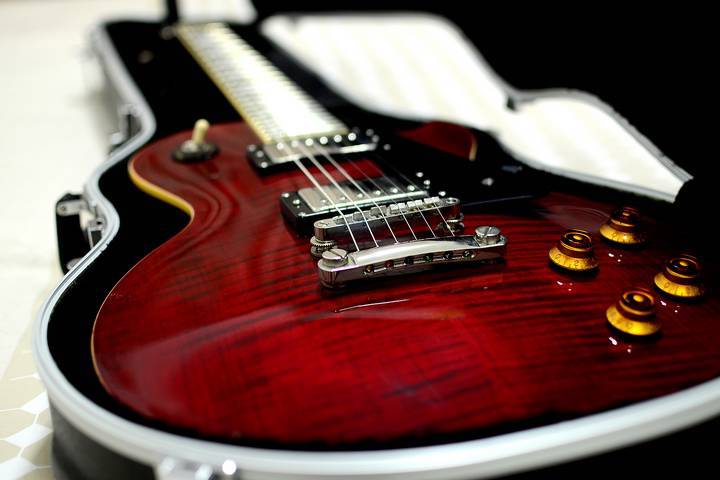
Paisley Pink was all about the summer of love and was manufactured between 1968 and 1969. Wallpaper was added to the body of the guitar, and the coating of a lawyer to keep it in place. These Fender telecasters looked great and were very popular.
Type #10: 50s Automotive Guitar Finishes
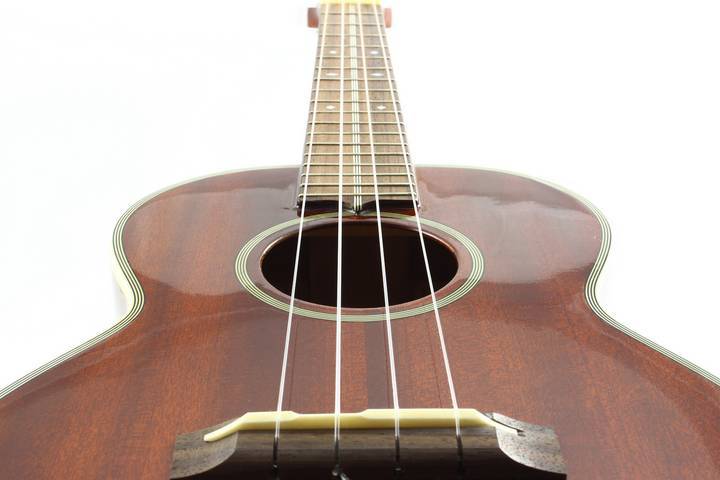
This represented a decade of rock and roll with automotive colours and a whole paint scheme. Fiesta red, surf green, lake placid blue and many other 50s car colours inspired 60s guitars.
While the main reason for putting a finish on a guitar was to protect it from oil deposits and dirt that built up over time, especially when used on the road or with regular gigging, it just made the instruments look good. From the humble beginnings of egg whites and sugar, along with French furniture polish, today’s guitars use these above finishes, so your instrument will look great for years to come.

